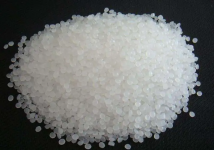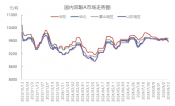read: 517 time:2025-05-27 20:13:52 from:化易天下
The question "why aniline does not give Friedel-Crafts reaction" is a significant one in organic chemistry, especially for those studying aromatic substitution reactions. The Friedel-Crafts reaction is a key method for introducing alkyl or acyl groups into an aromatic ring. However, aniline, a primary aromatic amine, does not undergo this reaction easily. This article will explore the reasons behind this chemical behavior, breaking down the factors that inhibit aniline's participation in the Friedel-Crafts reaction.
Aniline (C6H5NH2) contains an amino group (-NH2) attached to a benzene ring. The amino group is an electron-donating group, which generally activates the benzene ring towards electrophilic substitution reactions. However, in the context of the Friedel-Crafts reaction, the electron-donating nature of the amino group plays a counterintuitive role.
The amino group significantly increases the electron density on the benzene ring, especially at the ortho and para positions. This increased electron density typically makes the ring more reactive towards electrophiles. But, in the case of the Friedel-Crafts reaction, this reactivity is a double-edged sword due to the presence of the Lewis acid catalyst, such as AlCl3.
The Friedel-Crafts reaction relies on a Lewis acid catalyst (like AlCl3) to generate the electrophile needed for the alkylation or acylation of the aromatic ring. When aniline is introduced into the reaction mixture, the amino group interacts strongly with the Lewis acid. The lone pair of electrons on the nitrogen atom in the amino group is highly nucleophilic, and it readily coordinates with the AlCl3.
This coordination forms a complex between aniline and the Lewis acid, leading to the protonation or complexation of the amino group. As a result, the nitrogen's lone pair, which is responsible for activating the benzene ring, is no longer available. Consequently, the electron-donating effect of the amino group is diminished, reducing the reactivity of the aromatic ring towards the electrophile.
Another important aspect of why aniline does not give the Friedel-Crafts reaction is the formation of a deactivating complex. The complex formed between aniline and AlCl3 is highly stable and deactivates the benzene ring. This deactivation occurs because the complexed amino group withdraws electron density from the ring rather than donating it, making the ring less nucleophilic and less likely to participate in the electrophilic substitution required for the Friedel-Crafts reaction.
Moreover, the complexation of the amino group with the Lewis acid can lead to the formation of an anilinium ion (C6H5NH3+). The anilinium ion is a strongly deactivating species that makes the benzene ring highly resistant to further electrophilic attack, effectively preventing the Friedel-Crafts reaction from proceeding.
In addition to the above factors, the presence of the Lewis acid can also lead to undesirable side reactions. For instance, the formation of an anilinium ion can promote polymerization or other side reactions that are not conducive to the desired Friedel-Crafts alkylation or acylation. These side reactions further reduce the yield of any intended Friedel-Crafts product, making the reaction inefficient and impractical for aniline.
In summary, the reason "why aniline does not give Friedel-Crafts reaction" lies in the interaction between the amino group of aniline and the Lewis acid catalyst. The strong coordination between the nitrogen atom and the Lewis acid deactivates the benzene ring, making it less reactive towards electrophilic attack. Additionally, the formation of a deactivating complex and the potential for side reactions further inhibit the Friedel-Crafts reaction. Understanding these factors is crucial for chemists when considering the suitability of aniline for various organic transformations.

Jincheng Petrochemical's 300000 ton polypropylene plant successfully trial production, 2024 polypropylene market analysis

The ABS market remains sluggish, what is the future direction?

Market differentiation of bisphenol A intensifies: prices rise in East China, while prices generally decline in other regions

The production method and process flow of silicone acrylic lotion, and what are the common raw materials